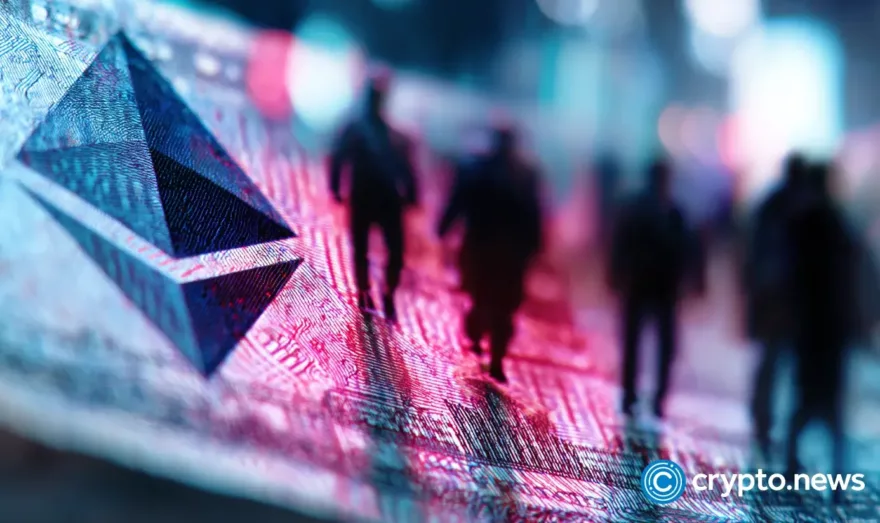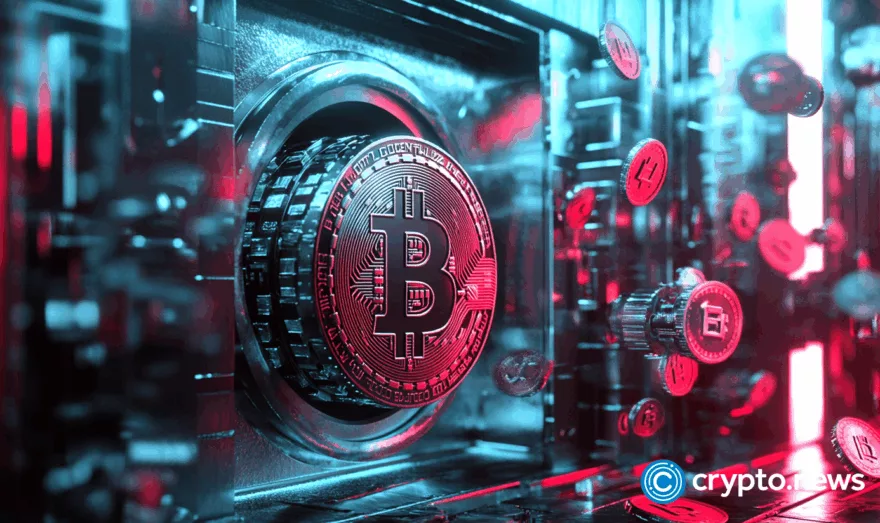“I Think we should Demount these kind of Training Wheels, Step by Step.”

Christoph Jentzsch, co-founder of Slock.it and one of the leading Ethereum developers, spoke to BTCMANAGER about lessons from the DAO hack, the ICO hype and Ethereum’s plans to scale.
Slock.it is a startup from Mittweida, a small town in Saxony, Germany. The startup aims to build an Universal Sharing Network, which runs almost solely on Ethereum’s smart contracts. After the company’s involvement in the infamous DAO scandal, it stayed silent about co-founder Christoph Jentzsch and his team. In recent weeks, however, the company is pursuing its goals more vigorously again.
Slock.it is expanding after receiving an investment. The company is hiring talent, mostly front- and back-end developers. Everybody who is searching for an adventure in Mittweida or Berlin, should give it a try. But here we start with an interview with Christoph Jentzsch, carried out in German and translated into English.
The DAO: “It has been an Intensive Experience for the Whole Community, and we surely Learned a lot about Smart Contract Safety.”
Today it has been around One Year since the DAO was Hacked. As Slock.it was somehow involved in it, this has been a Severe Setback for you. What do you think about the Incident?
Slock.it’s involvement in the DAO was that we wrote the Whitepaper and released the code on GitHub. We aimed to fund our Universal Sharing Network with the DAO, which is why the hack has actually been a setback for us.
But we have learned a lot. I think it has been an intensive experience for the whole community, and we surely learned a lot about smart contract safety. Regarding this we made a lot of progress. What I don’t like, however, is that many smart contract applications are no longer decentralized today, but made centralized, for reasons of security. Most of the ICOs we currently see don’t even have the goal to build something decentralized.
Before the DAO everybody who developed smart contracts wanted to create something decentralized. Something which exists forever once it is released. This was the claim of the DAO. Today this is often ignored, for reasons of security. I think, however, that we should not forget this goal and dismount the training wheels step by step.
The DAO wanted to Decentralize Companies and Organizations. Was it too Early to Achieve this Goal?
Yes, likely. We are trying it again now, with the Charity DAO I have developed with a partner, independently from Slock.it. Also, Nick Dodsen from Consensys is currently working on a DAO, which is similar to the original DAO. When I looked at it the last time in my opinion it did not work, but as it was developed further since then, I can’t really assess it.
You argue that currently there is no real DAO, if you define it as a “Decentralized Autonomous Organization?”
I understand DAO in the sense that there is no person or entity which is crucial for the survival of the organization. If you take away a single person, and everything falls apart, then it is no DAO. You could say that Bitcoin or Ethereum is a DAO, but as we understand it, as an organization with certain purposes, there is currently none.
If you look at the current ICOs, you see mostly Appcoins; you need a token to take part, but tokenholders do not have full control.
ICO and traditional investments: “The valuation is too high.”
Is the Market for ICO, which Breaks new Records nearly every week, in a Bubble?
That’s hard to say. You usually only know retrospectively whether there was a bubble or not. But I think, we can note that a lot of ICOs are overvalued. Look at Gnosis; it’s a great team and a great idea. But if you calculate their valuation, we must come to the conclusion that it is too high. They sold less than five percent of their tokens for $12 million. After landing on exchanges, the price of the token increased further, and if you calculate the whole market cap, it is around $2 billion. Not that I want to criticize the developers or the concept – it has huge potential – but that is definitely way too high.
Let’s talk about Slock.it. Contrary to the Trend, you did not do an ICO but Searched for Traditional Investors. Why?
There are several reasons. First, as you may have noticed, I’m not overly happy with ICOs. For some it makes sense, but for most it doesn’t. Second, a traditional seed investment does not only give us money, but can also open doors for us. I don’t want to rule out that we will sometime do an ICO or something like the DAO. But currently we neither need nor plan this.
You received a $2 million Investment. What will you do with it?
We have some projects I’m not allowed to talk about. Just this; projects for major companies which want to work with Ethereum.
We received the seed investment mostly for our Universal Sharing Network. The idea is to connect many things, mostly smart locks, with the blockchain. Smart locks are digital locks for physical things you can open from the Internet. Imagine, you close a machine with such a lock, and whoever wants to use it, deposits a security and pays a price for each hour. All this can be done entirely with smart contracts. We want to enable private people to share things more effectively.
Amazon is the platform you use to buy and sell. We want to be the same, but for lending and renting. Other than Amazon we are not really a middleman, since payment and contract are completely on the blockchain. What we do, is all the other stuff around it, like the user interface.
Scalability: “The bigger Ethereum becomes, the harder it is to make those changes to the system.”
If you realize your goals, there will be quite some traffic on Ethereum’s Blockchain. After several ICOs pushed Ethereum to its Capacity Limit in recent weeks, the Question Becomes Urgent, How does Ethereum Scale?
Not everything will happen on-chain. We are currently developing state channels, which is like the Lightning Network for Bitcoin. Sure, with Proof of Stake and Sharding, Ethereum will be able to scale better than Bitcoin. But honestly – if I buy something to drink, I don’t ask a notary to confirm this. Ethereum is the highest authority, and if we don’t want to use it for everything, we need state channels, or, better, a network of state channels. This is the Raiden Network, which is currently being developed by Brainbot technologies.
We from Slock.it are already working and experimenting with such state channels for our apps. With them you can transfer both ether and ERC20 tokens. More general states, like you use for other contracts, can currently not be changed with such channels.
Ethereum’s Big Vision for Scaling On-chain is Proof of Stake and Sharding. When will we see the Fruits of Labor?
Metropolis, the next major release, will not contain Proof of Stake. In my view, we will get it sometime around Summer 2018. Sharding will need another two or three years. The bigger Ethereum becomes, the harder it is to make those changes to the system. If there is more money at stake, you become more conservative. The changes will come, but more slowly.
How many Transactions can Ethereum Confirm Each Second?
Currently we can process about twice the number of transactions as Bitcoin, which are 14, if we calculate with the absolute minimal transactions of Bitcoin. What is the block size for Bitcoin is the gas limit for us. The miners have a target, that every block has roughly 4.7 million gas, which sums up to the said 14 transaction each second.
Other than with Bitcoin the miners can lift the limit, for about one thousandth each block. This way we can come closer to the real limit, which will be reached when the miners need a longer time to process a block. Then they will lose money if the make blocks larger, and a market for fees will develop, since the miners will only add more transactions, if their fees overweight the risk to loose money.
However, if there is no large ICO, the current target area works well. Until we reach the real, hard limit, we have some time, and we will also improve the technology of the system. This is why it is hard for me to give you precise numbers.













